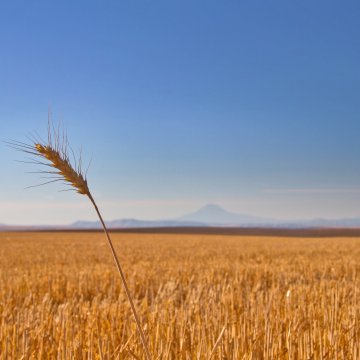
1. Grains and Soybeans Plunge in Overnight Trading
Grains and soybeans dropped in overnight trading on forecasts for wetter weather in parts of the U.S. Corn Belt that may give crops a boost.
Rain is expected in parts of the Midwest as “patchy storms” move through parts of Iowa and southeastern Minnesota, Commodity Weather Group said in a report.
Precipitation also is expected in parts of the southern Midwest this weekend, though exactly where the rain will fall is uncertain at this point, the forecaster said.
In the Southern Plains, dry weather will aid winter-wheat harvest the rest of the week, CWG said.
Still, it’s not all rosy as temperatures in Montana hit almost 110°F. earlier this week and have been stuck in the 90s since. In the six- to 10-day forecast, the lack of rain in the Northern Plains will stress spring wheat, which is moving into the critical heading stage, the weather forecaster said.
Much of the Northern Plains has been dry the past week with little or no rain falling in parts of the Dakotas south through Texas, according to the National Weather Service. Minnesota, Iowa, Missouri, much of Illinois and Arkansas also haven’t seen much rain in the past seven days, the NWS said.
On the demand front, exporters sold 153,416 metric tons of corn to an unnamed buyer, the U.S. Department of Agriculture said yesterday, though that was the first announced sale of more than 100,000 metric tons since May 27.
The USDA will release its weekly export sales report this morning. The U.S. Drought Monitor also is expected to be updated today.
Corn futures for July delivery plunged 16¢ to $5.56½ a bushel overnight on the Chicago Board of Trade.
Wheat futures for July delivery dropped 9½¢ to $6.56¼ a bushel, while Kansas City futures lost 11½¢ to $6.07¾ a bushel overnight.
Soybean futures for July delivery plummeted 21¼¢ to $13.22 a bushel. Soymeal fell $2.10 to $381 a short ton, while soy oil dropped 1.92¢ to 55.91¢ a pound.
**
**
2. Ethanol Production Drops to Three-Week Low While Inventories Rise
Ethanol output dropped to the lowest level in three weeks while inventories jumped in the seven days that ended on June 11, according to the Energy Information Administration.
Production of the biofuel fell to an average of 1.025 million barrels a day last week, the EIA said in a report.
That’s down from 1.067 million a week earlier and the lowest since the week that ended on May 21.
In the Midwest, by far the biggest producing region, output dropped to an average of 979,000 barrels a day, down from 1.021 million barrels a day last week and also a three-week low, the agency said.
West Coast production fell to 8,000 barrels a day, on average, from 9,000 barrels a week earlier.
That was the entirety of the declines as East Coast output was unchanged at 11,000 barrels a day and Gulf Coast production stayed at an average of 17,000 barrels a day, the government said.
Rocky Mountain production rose to 10,000 barrels a day from 8,000 barrels a week earlier.
Ethanol stockpiles, meanwhile, jumped to 20.602 million barrels in the week through June 11.
That’s up from 19.96 million barrels a week earlier and the highest level since the seven days that ended on April 2, the EIA said in its report.
**
3. Hot Weather Sits Over Central U.S. With Heat Indexes in the Triple Digits
Hot weather is parked over the central U.S. where heat advisories have been issued, according to the National Weather Service.
The advisories will take effect at 1 p.m. today and last through 8 p.m. in parts of central Nebraska as heat indexes are expected to top out at around 108°F., the NWS said in a report early this morning.
In southern Iowa and northern Missouri, temperatures are expected to top at around 100°F. with heat indexes up to 105°F., the agency said.
In parts of eastern Kansas, index values are forecast to top out at about 105°F. this afternoon.
Outdoor work should be limited as heat illnesses will occur.
Farther east, there’s a chance of thunderstorms overnight into Friday in parts of southern Illinois and Indiana, the NWS said.
“An isolated severe storm is possible” with the main risks being strong winds and lightning, the agency said. “There is an enhanced risk for severe thunderstorms on Friday and Friday night.”








 User Center
User Center My Training Class
My Training Class Feedback
Feedback












Comments
Something to say?
Log in or Sign up for free